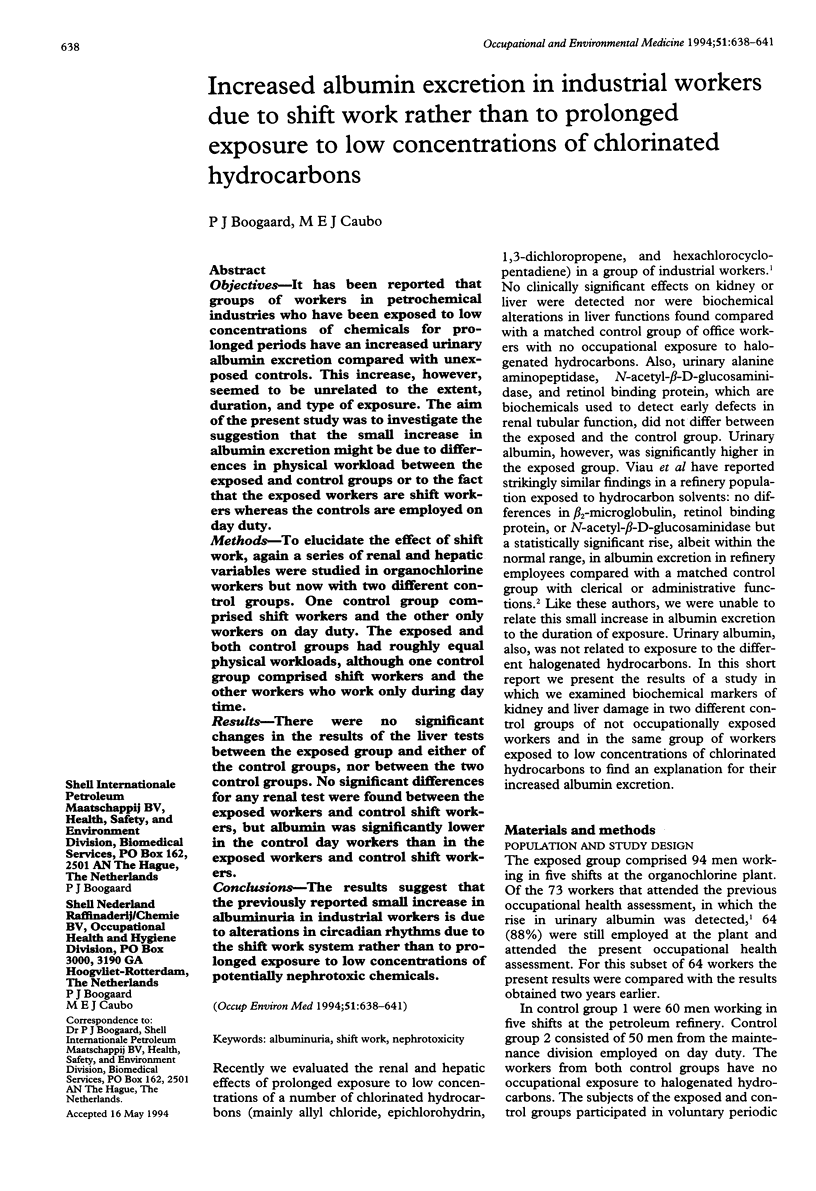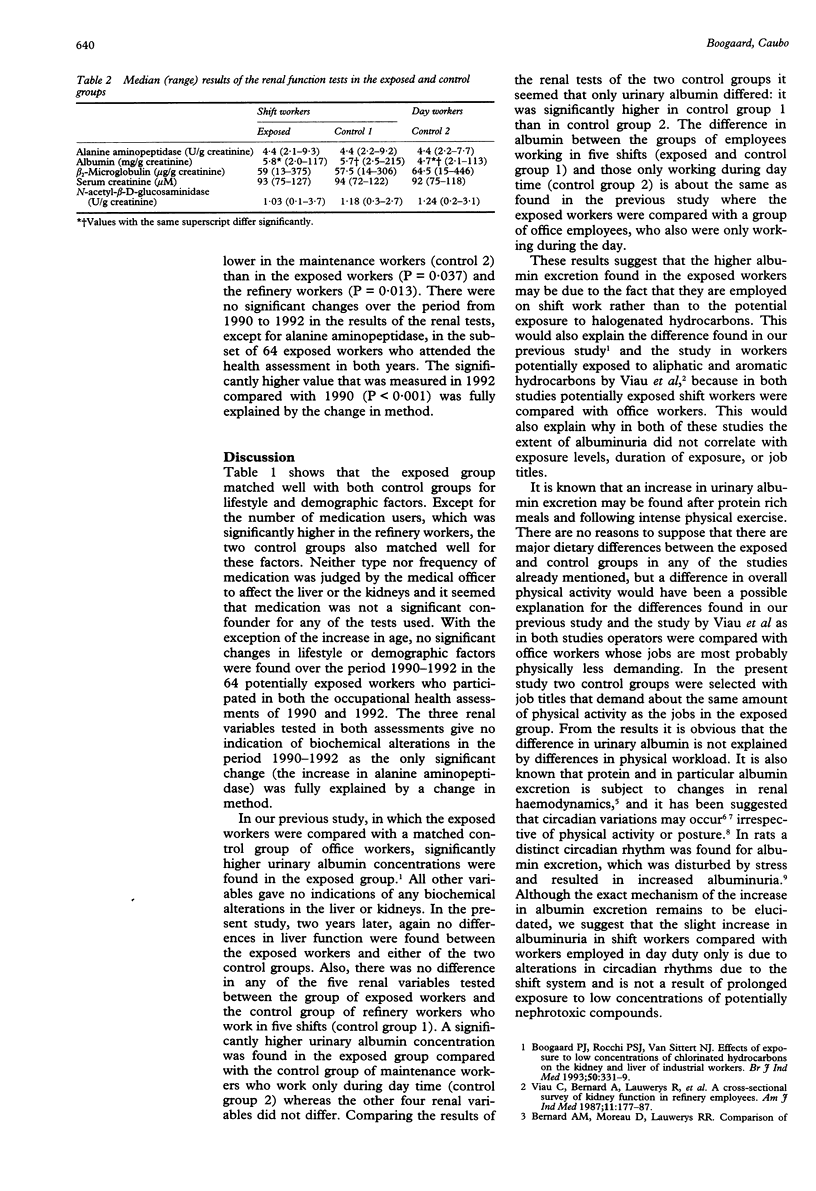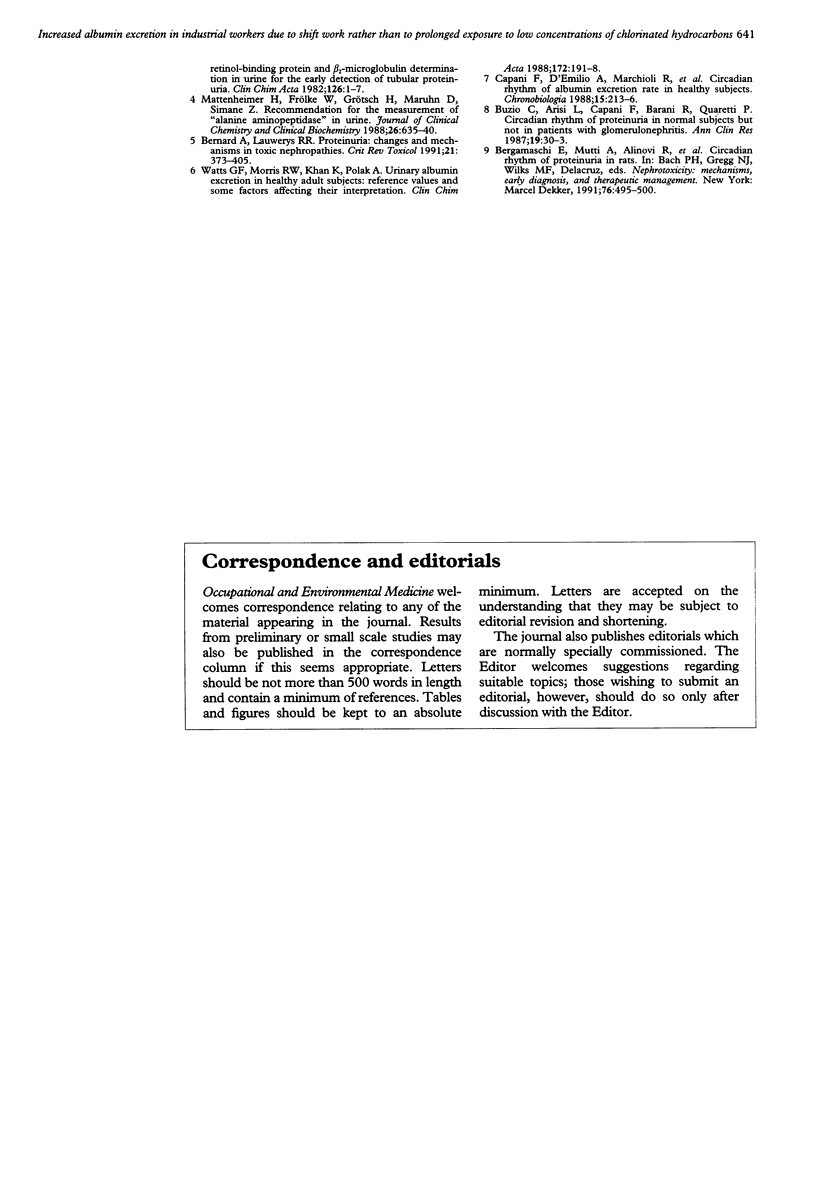Abstract
OBJECTIVES--It has been reported that groups of workers in petrochemical industries who have been exposed to low concentrations of chemicals for prolonged periods have an increased urinary albumin excretion compared with unexposed controls. This increase, however, seemed to be unrelated to the extent, duration, and type of exposure. The aim of the present study was to investigate the suggestion that the small increase in albumin excretion might be due to differences in physical workload between the exposed and control groups or to the fact that the exposed workers are shift workers whereas the controls are employed on day duty. METHODS--To elucidate the effect of shift work, again a series of renal and hepatic variables were studied in organochlorine workers but now with two different control groups. One control group comprised shift workers and the other only workers on day duty. The exposed and both control groups had roughly equal physical workloads, although one control group comprised shift workers and the other workers who work only during day time. RESULTS--There were no significant changes in the results of the liver tests between the exposed group and either of the control groups, nor between the two control groups. No significant differences for any renal test were found between the exposed workers and control shift workers, but albumin was significantly lower in the control day workers than in the exposed workers and control shift workers. CONCLUSIONS--The results suggest that the previously reported small increase in albuminuria in industrial workers is due to alterations in circadian rhythms due to the shift work system rather than to prolonged exposure to low concentrations of potentially nephrotoxic chemicals.
Full text
PDF



Selected References
These references are in PubMed. This may not be the complete list of references from this article.
- Bernard A. M., Moreau D., Lauwerys R. Comparison of retinol-binding protein and beta 2-microglobulin determination in urine for the early detection of tubular proteinuria. Clin Chim Acta. 1982 Nov 24;126(1):1–7. doi: 10.1016/0009-8981(82)90356-4. [DOI] [PubMed] [Google Scholar]
- Bernard A., Lauwerys R. R. Proteinuria: changes and mechanisms in toxic nephropathies. Crit Rev Toxicol. 1991;21(5):373–405. doi: 10.3109/10408449109019572. [DOI] [PubMed] [Google Scholar]
- Boogaard P. J., Rocchi P. S., van Sittert N. J. Effects of exposure to low concentrations of chlorinated hydrocarbons on the kidney and liver of industrial workers. Br J Ind Med. 1993 Apr;50(4):331–339. doi: 10.1136/oem.50.4.331. [DOI] [PMC free article] [PubMed] [Google Scholar]
- Buzio C., Arisi L., Capani F., Barani R., Quaretti P. Circadian rhythm of proteinuria in normal subjects but not in patients with glomerulonephritis. Ann Clin Res. 1987;19(1):30–33. [PubMed] [Google Scholar]
- Capani F., D'Emilio A., Marchioli R., Nicolucci A., Vitacolonna E., Menduni P., Sensi S. Circadian rhythm of albumin excretion rate in healthy subjects. Chronobiologia. 1988 Jul-Sep;15(3):213–216. [PubMed] [Google Scholar]
- Mattenheimer H., Frölke W., Grötsch H., Maruhn D., Simane Z. Recommendation for the measurement of "alanine aminopeptidase" in urine. J Clin Chem Clin Biochem. 1988 Oct;26(10):635–644. [PubMed] [Google Scholar]
- Viau C., Bernard A., Lauwerys R., Buchet J. P., Quaeghebeur L., Cornu M. E., Phillips S. C., Mutti A., Lucertini S., Franchini I. A cross-sectional survey of kidney function in refinery employees. Am J Ind Med. 1987;11(2):177–187. doi: 10.1002/ajim.4700110207. [DOI] [PubMed] [Google Scholar]
- Watts G. F., Morris R. W., Khan K., Polak A. Urinary albumin excretion in healthy adult subjects: reference values and some factors affecting their interpretation. Clin Chim Acta. 1988 Mar 15;172(2-3):191–198. doi: 10.1016/0009-8981(88)90323-3. [DOI] [PubMed] [Google Scholar]


